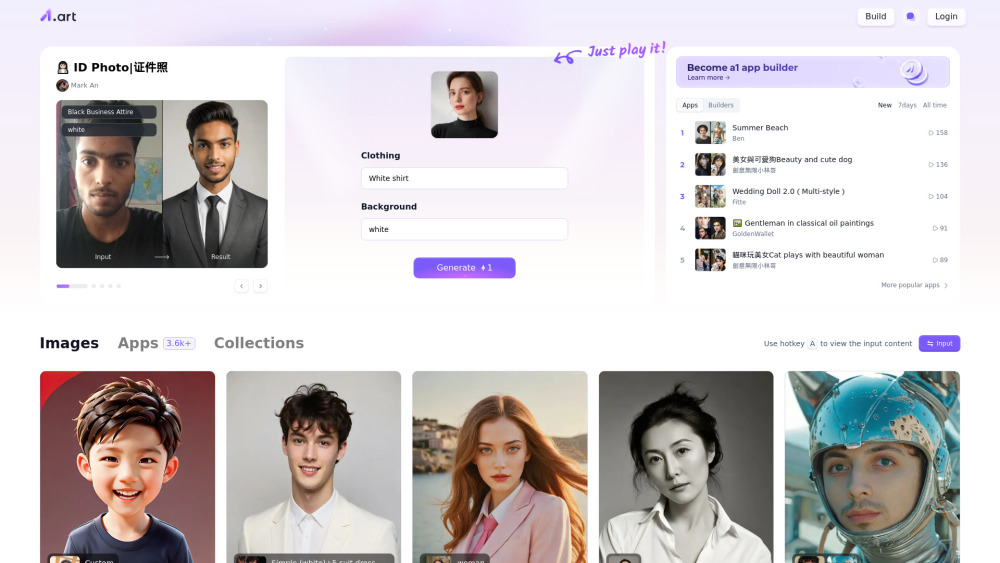On July 13, China's first AIGC (Artificial Intelligence Generated Content) micro-drama was launched, quickly winning over viewers and prompting demands for more episodes. Currently, the content produced by the video generation model remains limited, but platforms like Kuaishou and teams led by Chen Kun are setting a precedent in the tech and film industries. Critics were surprised by the results of this AIGC + film experiment, although both the production team and Kuaishou acknowledge that there is room for technological improvement. It takes courage to take the plunge, and navigating this evolving landscape is a wise approach.
By July 14, the second episode of "Shan Hai Qi Jing: Pi Bo Zhan Lang" was released, a fantasy micro-drama entirely produced by AI, reaching 2.37 million views. This series stands out amid a sea of reality-based and historical romance dramas. The concept for this AIGC micro-drama emerged in 2023, and by early 2024, Chen Kun's team presented a first draft trailer. However, both Chen and Kuaishou were dissatisfied, leading to multiple iterations before the July release. To showcase AI's advancements in just six months, Chen Kun revealed the progress in a 1 minute and 50-second video, recreating the series' trailer. Compared to the initial version, the movements of the creatures and character interactions improved significantly, with most content generated by Kuaishou's AI.
As the pre-release screening approached, it posed a challenge: a micro-drama designed for mobile viewing was displayed on a large screen, exposing any technical flaws. Chen was understandably anxious, stating that only 70%–80% of the shots met his standards for a big-screen presentation. Critics recognized this achievement, considering the overall quality commendable, especially with some shots displaying intricate details. Nevertheless, they acknowledged the need for further refinement in character development and narrative techniques. Chen and his peers agreed that, without achieving high consistency in elements like character portrayal, complex storytelling might be better suited for traditional methods.
Importantly, collaborative input from talented creators was essential for refining the technology. In mid-June, Kuaishou conducted free internal testing of its AI capabilities, allowing users to input brief descriptions and receive AI-generated videos in about three minutes, with various stylistic options available. Kuaishou’s tech effectively demonstrated complex interactions, such as the movement of chopsticks and facial expressions.
The production process has visibly transformed. Whereas traditional film often required over a hundred crew members for tasks like acting, cinematography, and sound, this micro-drama was produced entirely without live-action footage, even its costume design being AI-generated. Chen noted that producing a drama of similar scope and quality typically took 3 to 6 months, while "Shan Hai Qi Jing: Pi Bo Zhan Lang" was completed in just two months.
Navigating this new terrain requires adaptation, and both Chen and Kuaishou's executives acknowledge the evolving nature of AIGC micro-dramas. The launch of OpenAI’s Sora has intensified competition in video generation technology. Analysts note that while the front appears to be a technological competition, it is fundamentally about integrating technology with practical application.
The specific shape of the AIGC + film connection is still unfolding. When asked whether this forms a distinct market segment, Chen's team hesitated, indicating that AIGC can either create a niche in genres like fantasy or serve as a tool across various categories of short dramas. Currently, Chen stated that they are adapting their strategies in line with technological advancements and feedback from users and creators.
With over 270 million daily users on Kuaishou and more than 300 short dramas surpassing one million views, the demand for content is far outpacing supply. Chen revealed two pathways to increase production capacity: bringing in additional creators and enhancing the efficiency of existing ones, both relying on better technology for effective solutions.




